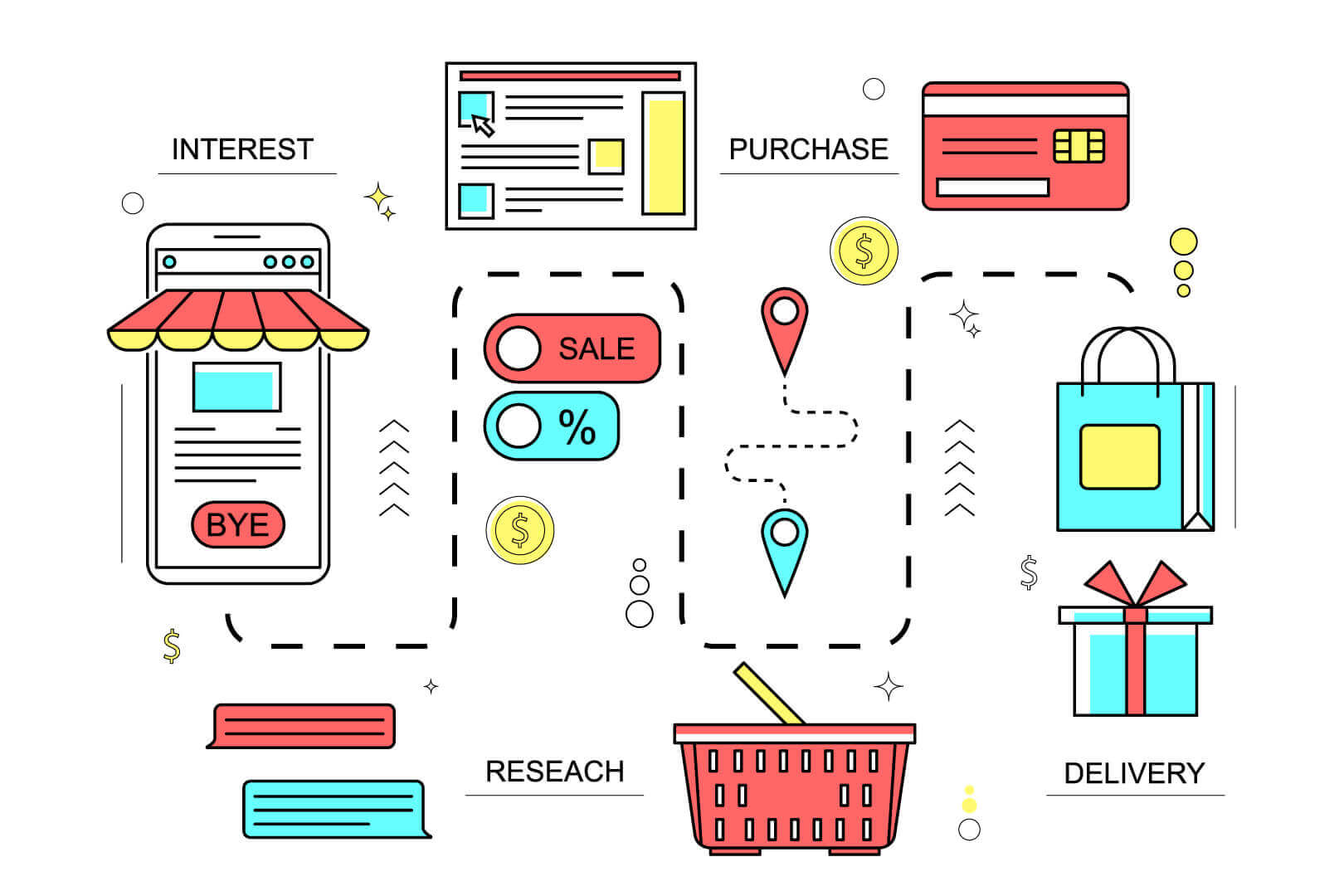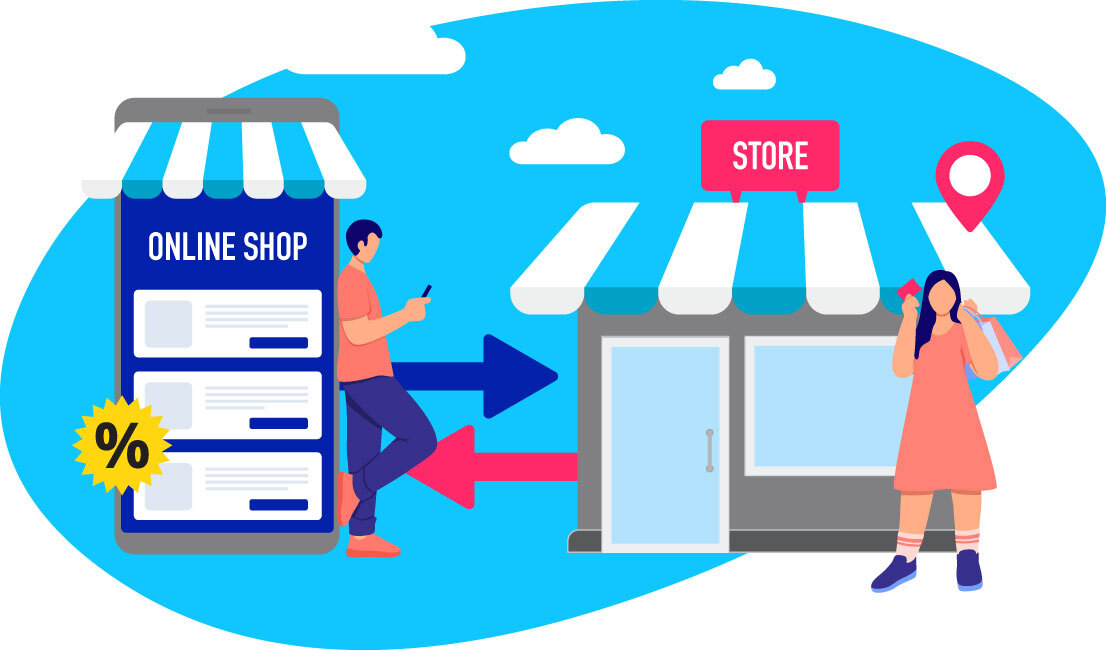6 min read
Customer journey mapping is increasingly considered an effective way to improve the customer experience. By leveraging data and artificial intelligence (AI), you are able to develop a more accurate view on your customers’ journey, and transform their online experience at every touchpoint along the way.
Creating a customer journey map is essential to understanding how your customers interact with your business. A customer journey map is a diagram that illustrates the steps your customers go through in engaging with your company. That does not necessarily mean just purchases, it can mean searching on a website, reading reviews on social media channels, interactions with sales teams, or a combination of these.
They are especially useful in the digital space. By mapping their journeys, you can discover customers’ touchpoints and identify any barriers to conversion – maybe they put items in their online shopping basket but struggle to complete the checkout process, for example. In which case, you should look at streamlining checkout.
It also allows you to fully automate your marketing campaigns. By setting triggers during a user journey, you can know how customers are likely to act on every step of the way – from onboarding to adoption, renewal to escalation and conversion – and serve them at every juncture through multiple connected channels.
This has tangible benefits for companies. Those that create and use customer journey maps are twice as likely to outperform their competitors who do not, according to Gartner .
What Are the Benefits of Customer Journey Mapping?
Even if you think your business meets all your customers’ needs, you can always do more. Customer journey mapping will allow you to:
Shift your focus to inbound
Inbound marketing involves creating content that is useful to your customers – it covers topics that they are interested in and already searching for. By capturing their attention first and foremost, it will keep them coming back to your website for more of the same, making them more likely to convert. It is much more effective than outbound marketing, which involves sending out more traditional marketing materials to try and lure in customers.
Mapping your customer journey will help you understand what you can offer your customers that they find interesting and helpful, and what to avoid. That way, you can create more of the former, and none of the latter.
Target your audience more accurately
More thorough customer research combined with a clearer vision of the customer journey will give you a deeper understanding of your customers’ needs and pain points. By knowing precisely who your customers are and what they are looking for, you can target them with a higher degree of precision, instead of a costly and wasteful ‘broad brush’ approach aimed at general consumers.
Get proactive about customer service
Seeing at which stages your customers experience difficulty will help you step in and solve the problem even before they encounter it.
Improve your customer retention rate
This all contributes to a better customer experience, with fewer customers leaving in favor of your competitors. Mapping the customer journey will also let you identify the common factors contributing to customer churn early on, and so you can re-engage with those customers before they leave, and make them less likely to abandon your business.
Optimize Your Customer Journey Mapping With AI
To ensure you can deliver exceptional customer experience, you can leverage marketing automation powered by artificial intelligence to supercharge your customer journey mapping, making it quicker, simpler, and more reliable. Here is how.
1. Make data-driven decisions
A traditional marketing approach requires a certain amount of guesswork: you are relying on humans to decide when to send out the campaign, what conditions to set, how much time to wait for the conditions, and so on. A data-driven approach takes the guesswork out of the equation. AI is able to suggest the optimum customer journey settings with decisions based on hard data, rather than intuition.
Think about when you spend your own money. You do research, read reviews by both experts and other users, consult friends and family and so on before making a purchase. You do not just take a guess on whether a product is worth buying. So why rely on guesswork when spending your company’s marketing budget?
2. Understand customer intent and pain points
Leveraging deep learning can help you analyze customer behavior at every step of the customer journey, giving you a better understanding of customers’ intents and pain points. And you can do this in real time, analyzing billions of customer data points across multiple owned and third-party channels. This data will help you identify patterns signifying preferences and the likelihood of conversion, by evaluating the recency and frequency of certain online customer activities. It will give you a true understanding of your customers’ habits, leaving you better positioned to address their needs and solve their pain points at every step of their journey.
3. Create a seamless customer experience
To create a seamless omnichannel experience, you need to know a customer’s preferred channels for different actions, such as using a tablet for searching and a mobile phone for purchasing, in order to best serve them at that particular stage. With all channels working together fluidly as part of a customer-centric approach, you will be able to deliver personalized content or service exactly where they are and where they need, whether they are converting, onboarding, renewing, or at another stage.
4. Personalize your marketing and product recommendations
By leveraging first- and third-party data, AI can help you better understand customer behavior and interests during the customer journey, and tailor your marketing messages or product recommendations to create bespoke content on an individual level, hence more likely to result in a higher level of engagement.
5. Optimize the best timings for engagement
If a customer places an item in their online shopping cart but does not complete checkout, it is common practice to send them a friendly reminder. The question is, how long do you wait before sending it? Too short will turn off the customer, but too long will be a wasted opportunity. Instead of a human guessing how long to allow, AI can predict the optimum time by analyzing historical behavioral data.
Engaging with your customers in real time like this will increase the effectiveness of your promotions and boost conversions by only targeting those customers most likely to convert.
6. Test and improve
Today’s customer behavior is constantly evolving. You need to continually test and improve your journey mapping in order to adapt to those shifts promptly. The beauty of AI models is that they are constantly learning and refining to become more accurate as you feed them more data. It means your customer journey mapping will become an ever more reliable resource for improving the customer experience.
Every business should aim to create great customer experiences. It is only by gaining a deep understanding of who your customers are and what they want, as well as how they currently engage with your company and how that process can be improved, that you can hope to transform their online experience for the better.
* Want to learn more about how to use AI-powered marketing automation to optimize your customer journey mapping, and create personalized customer experiences? We’re here to help! Get in touch with our team today to schedule an exclusive consultation.



